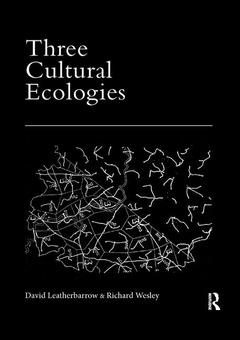Description
Three Cultural Ecologies
Authors: Leatherbarrow David, Wesley Richard
Language: English
Subject for Three Cultural Ecologies:
Keywords
Villa Stein De Monzie; Le Corbusier; corbusier; Tugendhat House; fine; Creative Commons Attribution Share Alike; arts; Avery Architectural; library; Fine Arts Library; Richard Wesley; Ars; Pars Urbana; Pars Rustica; Rue Du Faubourg; Exterior Space; Villa Savoye; Farm Yard; Maison Dom Ino; Taliesin Fellowship; Hillside Home School; Villa Dei Misteri; Opus Dei; Tea Circle; La Grande Chartreuse; Grape Vines; Residential Courtyard; La Tourette; Ancient Oikos; Monastic Culture
50.12 €
In Print (Delivery period: 14 days).
Add to cartPublication date: 06-2019
· 17.4x24.6 cm · Paperback
170.88 €
In Print (Delivery period: 14 days).
Add to cartPublication date: 08-2017
· 17.4x24.6 cm · Hardback
Description
/li>Contents
/li>Biography
/li>
Three Cultural Ecologies reverses common conceptions of modern architecture. It reveals how selected works of two modern architects, Le Corbusier and Frank Lloyd Wright, embraced environmental and cultural conditions as reciprocal and complementary. A basic premise of this book?s arguments is that cultural patterns cannot be adequately conceptualized in the terms that typically define ecology today. Instead, studies based on the natural sciences must be complemented by descriptions and interpretations of historical narratives, cultural norms, and individual expressions. Previously unpublished images and new interpretations will allow readers to rediscover works they thought they knew; Villa Savoye, Taliesin, La Tourette, and Ocatilla; as well as projects that are less well known: by Wright, the House on the Mesa and the City Residential Plan, and by Le Corbusier, the Immeuble-villas and Ilôt Insalubre projects. More broadly, this study of cultural ecology at three scales ? domestic, monastic, and urban ? reconsiders the history of modern architecture. The conditions brought about by societal and technological modernization and confronted by modern architecture have not disappeared in our time, but have intensified, making the task of imagining how some measure of equilibrium between culture and ecology might be achieved even more pressing.
1.Speaking of Cultural Ecology 2.Pre-modern Home Economics 3.Rustica and Urbana 4.Up on the Roof 5.Pre-modern Cloisters and Precincts 6.Alone-Together Naturally 7.Into the Desert 8.Answering Disequilibrium
David Leatherbarrow is Professor of Architecture, University of Pennsylvania, where he serves as Chairman of the Graduate Group in Architecture (Ph.D. Program). He teaches architectural design as well as the history and theory of architecture, gardens, and cities. His recent books include Architecture Oriented Otherwise, Topographical Stories: studies in landscape and architecture, and Uncommon Ground: architecture, technology and topography.
Richard Wesley is Adjunct Professor of Architecture, University of Pennsylvania, where he serves as Undergraduate Chair in the Department of Architecture and teaches architectural design and theory. He has previously taught at the University of Illinois, University of Notre Dame, and Harvard University. His essays and reviews have been published in Architectural Research Quarterly,Critical Juncture,Harvard Design Magazine, Journal of the Society of Architectural Historians, Rassagna, Res, and VIA.




